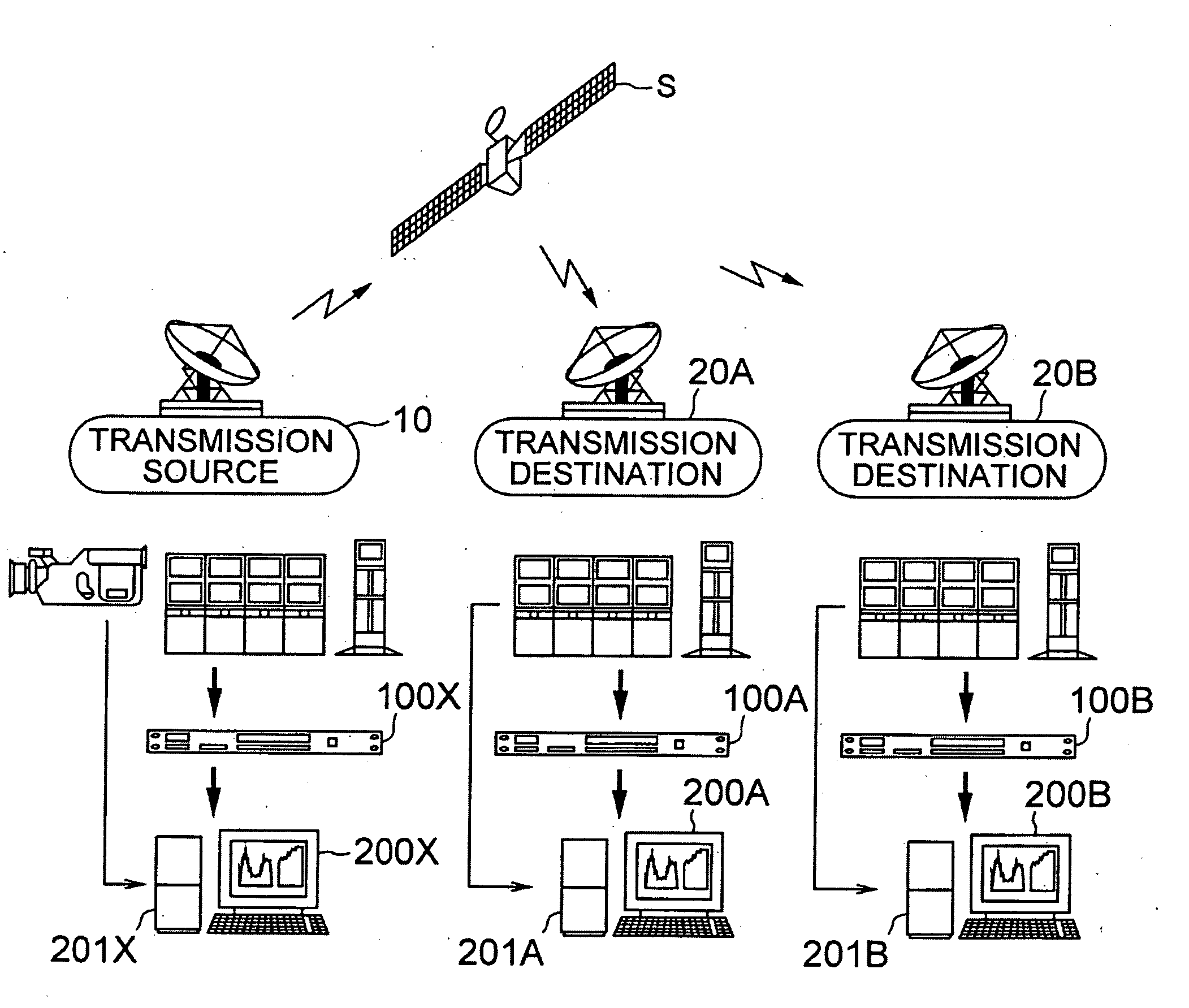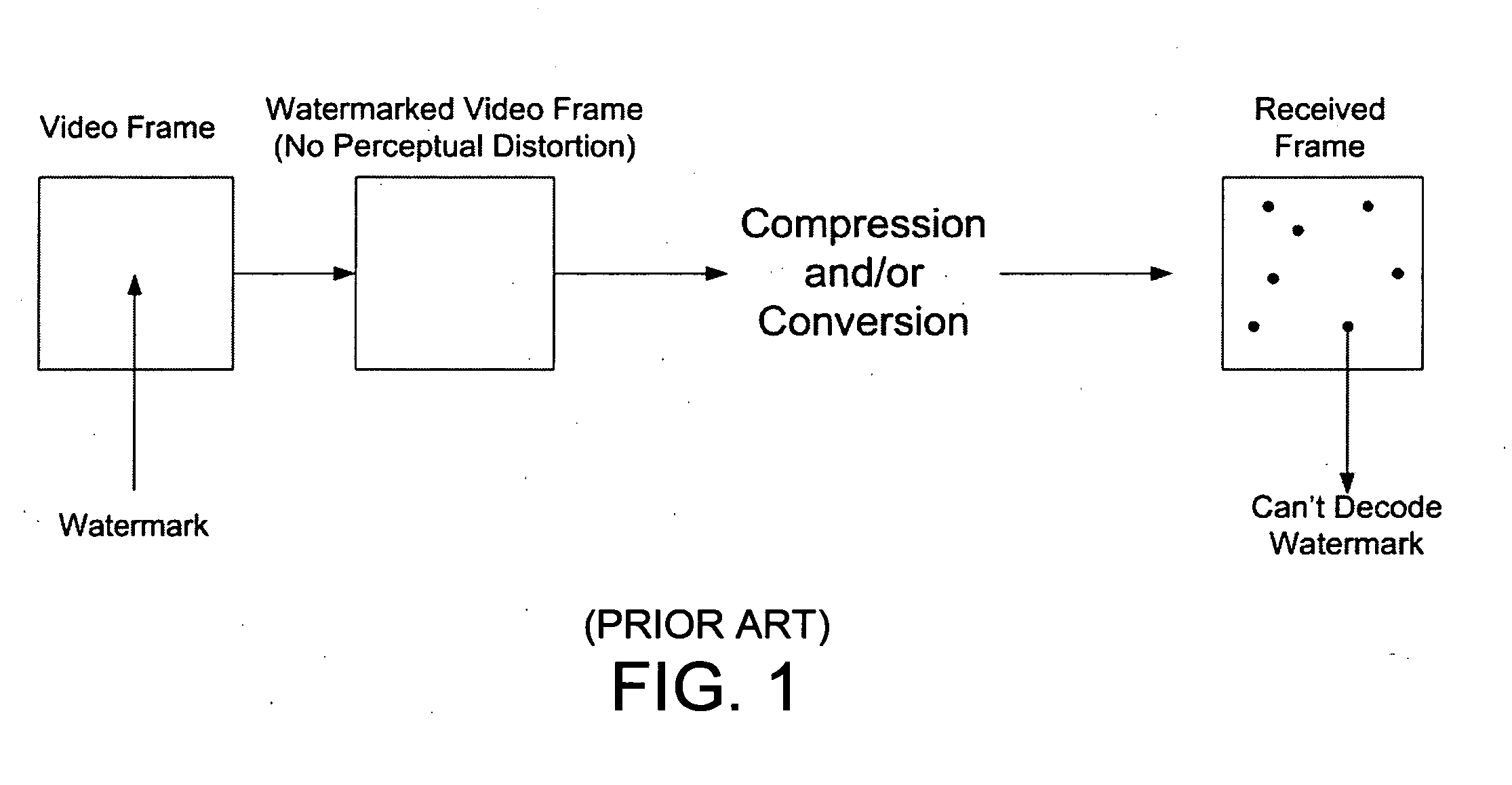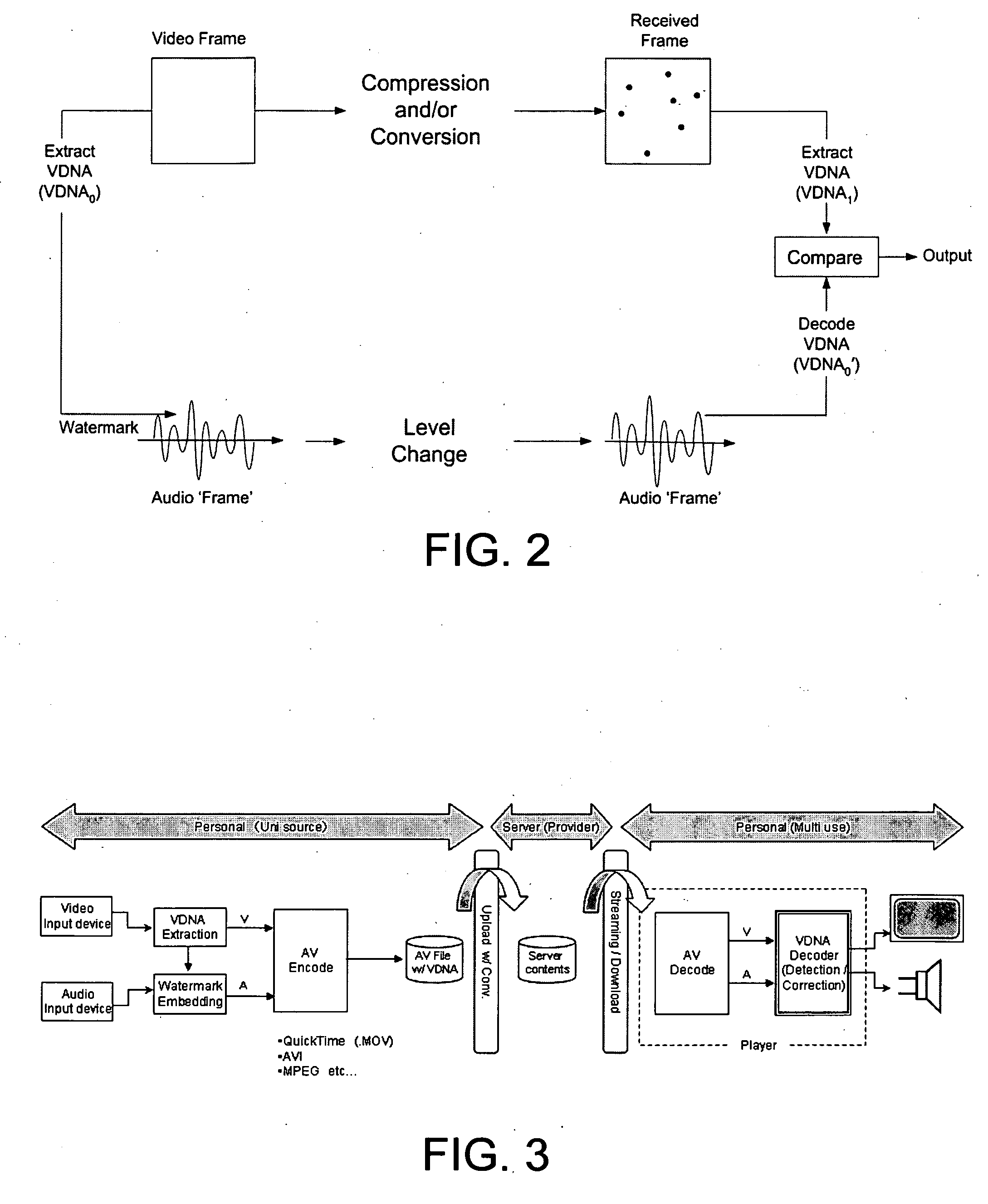Video monitoring involving embedding a video characteristic in audio of a video/audio signal
a video and audio technology, applied in the field of video monitoring involving embedding a video characteristic in the audio of a video/audio signal, can solve the problems of video quality assessment, degradation of coded/transmitted video, and few practical methods and objective metrics to measure video quality
- Summary
- Abstract
- Description
- Claims
- Application Information
AI Technical Summary
Benefits of technology
Problems solved by technology
Method used
Image
Examples
Embodiment Construction
[0024]In one example of a monitoring method, a first video characteristic, hereinafter referred to as the first VDNA, is extracted at an encoder / transmitter from a video frame of a video / audio signal. This first VDNA is then embedded in an audio signal portion of the video / audio signal. The audio signal portion corresponds to the video frame. The group of audio samples corresponding to the same video frame is referred to here as an “audio frame”.
[0025]At the receiver, the embedded first VDNA is extracted from the audio signal portion of the received video / audio signal. A second VDNA is computed from the received video frame. The same algorithm may be used to determine the second VDNA from the received video frame as was used to determine the first VDNA from the original video frame prior to transmission. The first and second VDNAs are then compared to each other. Depending on the type of application, different decisions can be made if the VDNAs and VDNA parameters do not match. For ...
PUM
 Login to View More
Login to View More Abstract
Description
Claims
Application Information
 Login to View More
Login to View More - R&D
- Intellectual Property
- Life Sciences
- Materials
- Tech Scout
- Unparalleled Data Quality
- Higher Quality Content
- 60% Fewer Hallucinations
Browse by: Latest US Patents, China's latest patents, Technical Efficacy Thesaurus, Application Domain, Technology Topic, Popular Technical Reports.
© 2025 PatSnap. All rights reserved.Legal|Privacy policy|Modern Slavery Act Transparency Statement|Sitemap|About US| Contact US: help@patsnap.com



